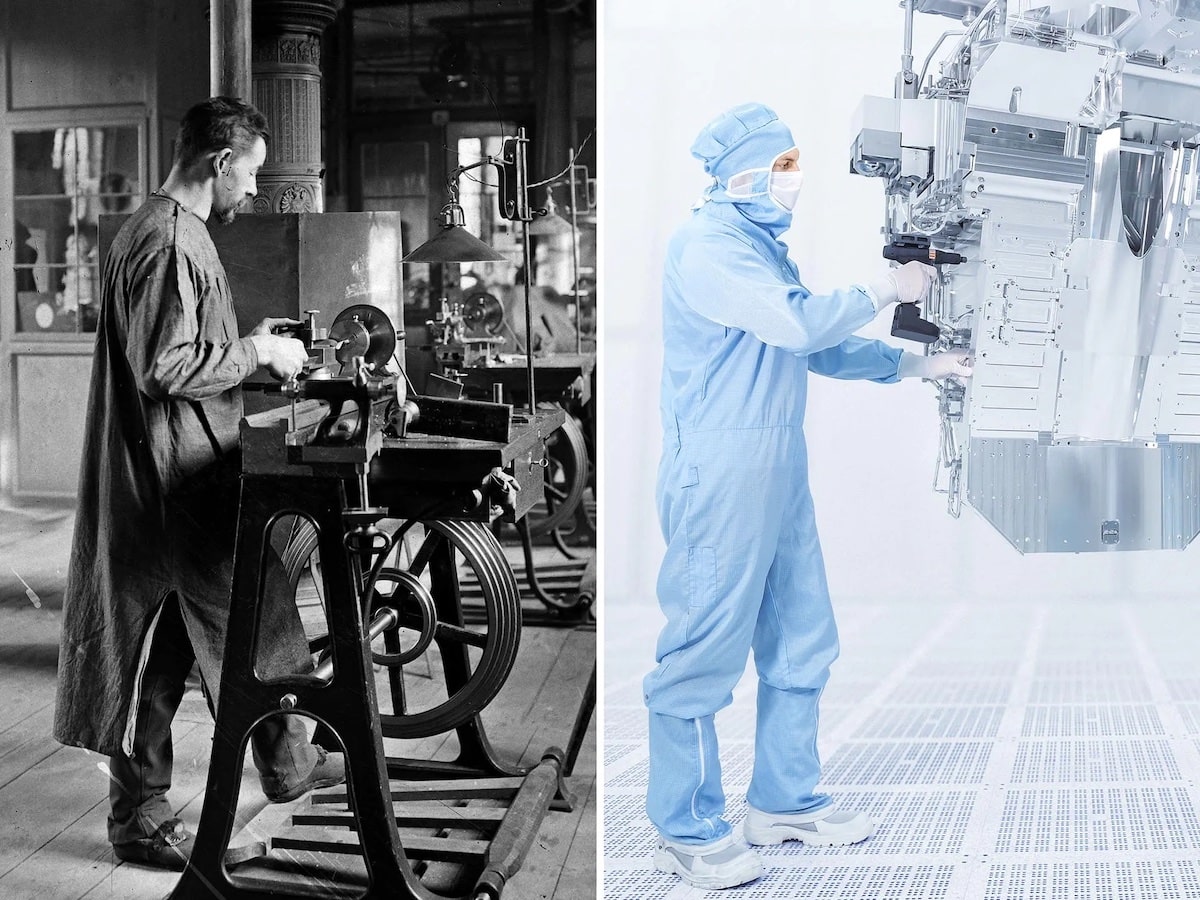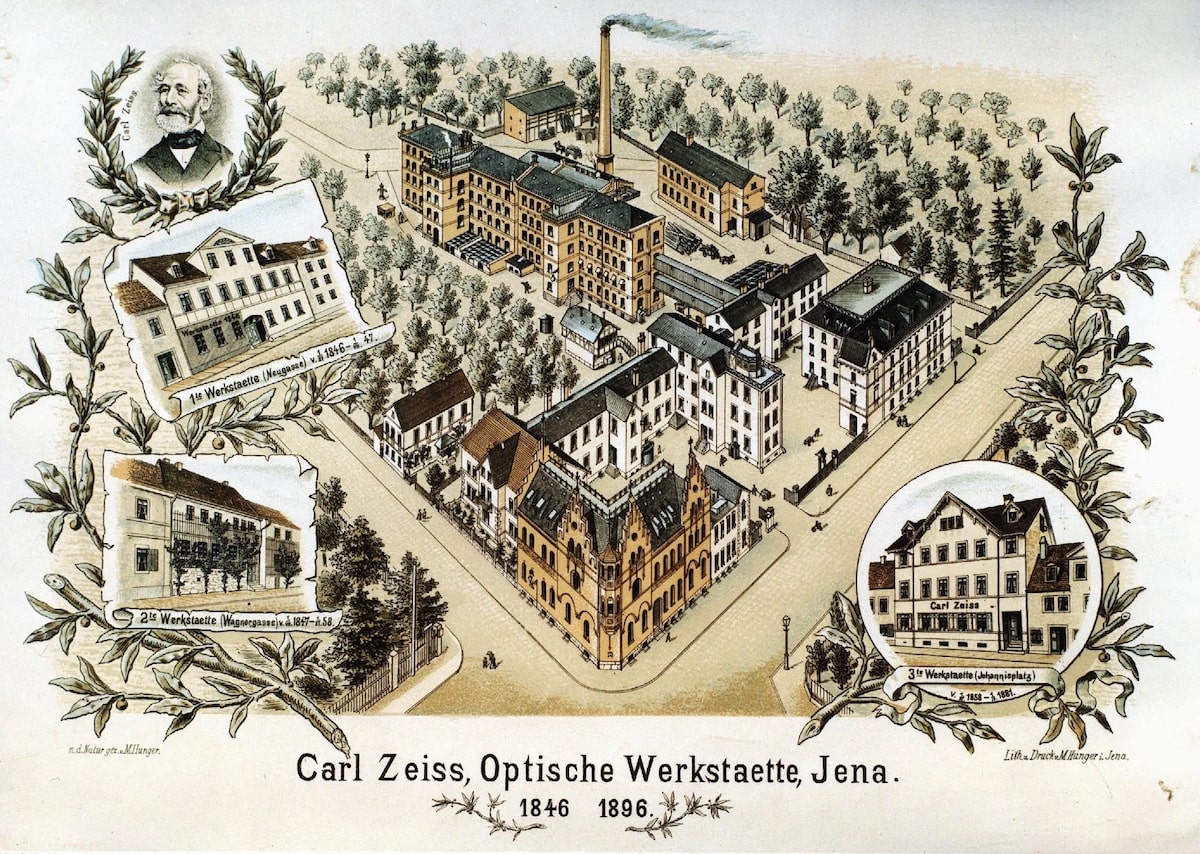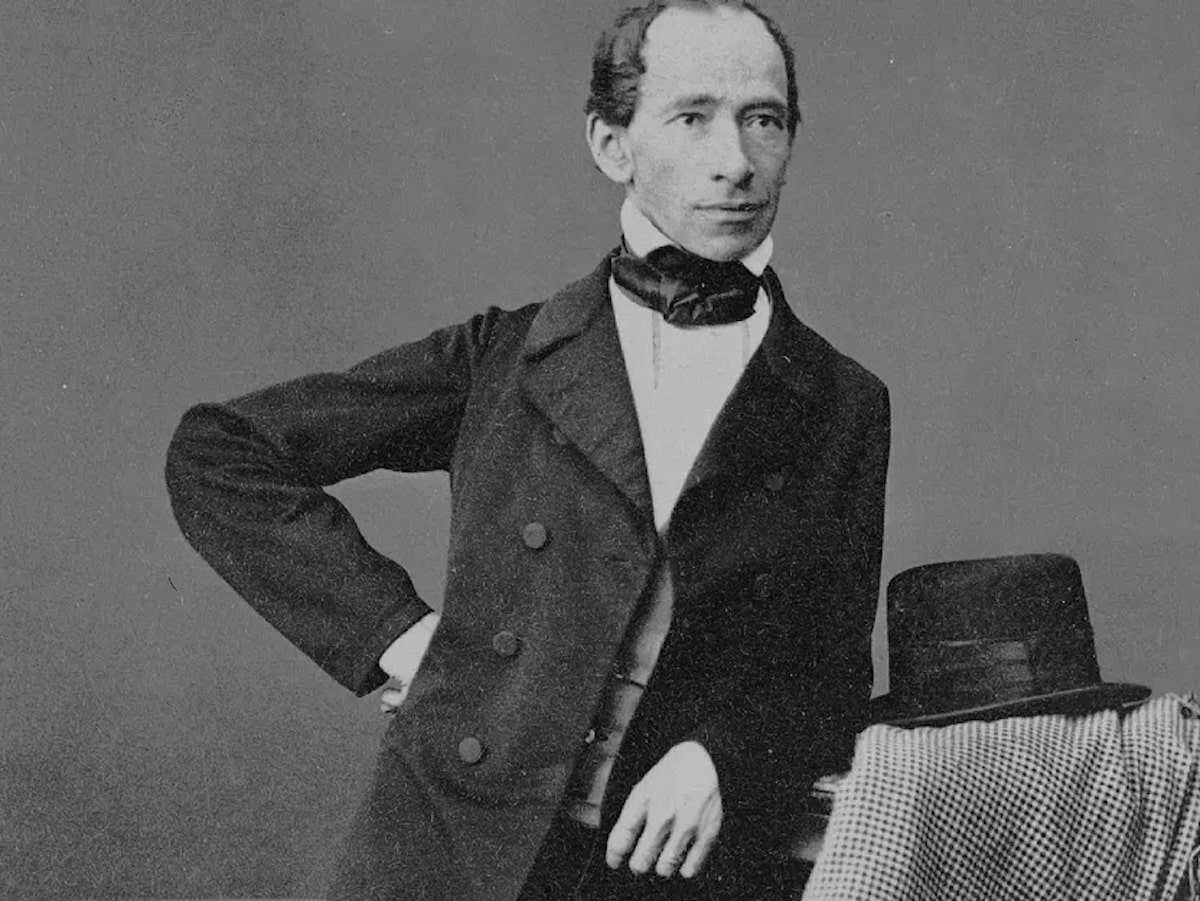175 Years of ZEISS: Powering Innovation for the Future
ZEISS celebrates 175th anniversary in 2021 and looks back over a history packed with pioneering spirit, seized opportunities and new prospects
- The company's unwavering passion for making the seemingly impossible possible has transformed it from a modest workshop for precision mechanics in Jena to a globally recognized technology company serving tomorrow's markets.
- Microscopy, the Moon landing, Nobel Prizes and EUV lithography are just some of the technical milestones that have helped ZEISS go down in history.
- And in fact, the company's history also mirrors German history with all its highs and lows.
The company's success story began 175 years ago, in a small workshop. On 17 November 1846, young mechanic Carl Zeiss opened his workshop for precision mechanics and optics in Jena, thus laying the foundation for what would become today's global technology player ZEISS. Zeiss went on to join forces with physicist and mathematician Ernst Abbe 20 years later, which proved to be the first step toward the workshop's transformation into a fully fledged company. This collaboration also led to the company's close links to science forming a part of its DNA.
"ZEISS has a very unique and rather turbulent history. And its many technological milestones attest to its repeated - and successful - attempts to challenge the limits of what is physically and technically feasible. This unique innovative spirit has imbued the company with real staying power while helping both us and our customers to be successful," says Dr. Karl Lamprecht, ZEISS President and CEO.

ZEISS celebrates 175th anniversary in a variety of ways
Today, ZEISS is a globally leading technology company operating in the optical and optoelectronic industries. It is divided into four segments: Semiconductor Manufacturing Technology, Industrial Quality & Research, Medical Technology and Consumer Markets. ZEISS employs over 34,000 people in almost 50 countries. Following Carl Zeiss' death, Ernst Abbe established the Carl Zeiss Foundation in 1889, and it remains one of Germany's biggest foundations for the promotion of science to this day.
The company will be celebrating its 175th anniversary through a variety of activities and events. Its close links to science are evident in projects such as the "ZEISS Beyond Talks" interview series. In these interviews, pioneers and eminent figures from across the globe, including climate researcher Professor Antje Boetius, speak about their work, their visions, their passion and the topics that are having a major impact on our world. This anniversary year is also a great time for ZEISS to pool, in a new initiative, its strategic efforts, funding and the commitments it has made for the common good over many years in a bid to encourage children and young people to consider a career in the sciences and conduct open-minded research.
An official anniversary celebration is set to be held in November 2021. Employees from around the world will be able to tune into a virtual event, which will also welcome prominent figures from the worlds of science, politics and the economy.
Innovations are ZEISS' lifeblood
Company founder Carl Zeiss employed a process of trial and error to kickstart the innovative trajectory that has resulted in the high-tech company we know today. In the initial years that followed the opening of his workshop, he designed, built and repaired physical instruments. In 1847, he began producing simple microscopes, and from 1857 onwards he and his team also built compound microscopes. From the mid-1860s on, he worked with Ernst Abbe to produce objective lenses on the basis of mathematical calculations. Ernst Abbe was a private lecturer at Jena university before becoming Carl Zeiss' ingenious business partner. In 1873, Abbe developed his eponymous formula to limit the optical resolution in a microscope. Since the 1890s, Abbe’s findings and his style of working have also been adopted in other fields of optics. This has led to the creation of all-new products, new business areas and rapid growth for the company.
However, what proved pivotal to the company's development was Jena-based glass chemist Otto Schott, who successfully produced glass that offered new optical properties. In 1879 he sent a sample to Abbe, a move that would lead to a fruitful collaboration that would quickly see the duo working more closely together. Glaswerk Schott & Genossen commenced factory operations in September 1884. The quality of the optical glass ultimately made it possible for the benefits of Abbe's theory to be fully implemented in Zeiss instruments.
These developments marked the beginning of more than 175 years of ongoing innovation. And it proved to be a pioneering stroke of genius to marry scientific research with entrepreneurial acumen. This attitude and approach permeate ZEISS and have paved the way for many technological innovations.
Technological milestones: From microscopes, Nobel Prize winners and photos of the first Moon landing through to EUV technology for digitalization
So Carl Zeiss embarked on a long journey, from the first microscope he built in 1846/47 and via many subsequent steps to ultimately helping the company become a leading technology player that achieved technical milestones in its various business areas. Abbe's scientific findings and his style of working have also been adopted in other fields of optics. This has led to the creation of all-new products, new business areas and rapid growth for the company.
The multitude of technological milestones achieved throughout the company's history include ZEISS' involvement in the Moon landing on 20 July 1969, which helped it redefine the limits of what is possible, with a footprint becoming the symbol of this outstanding achievement. The photos from this historic event were captured with ZEISS camera lenses that were specially developed for use in space. The camera lenses used during the mission formed the nucleus for the lenses that would later be developed for optical lithography.
ZEISS is also renowned as a supplier to planetariums. The first planetarium, which was built for the Deutsches Museum in Munich, opened its doors in 1925, attracting the attention of vast swathes of the population, and saw orders coming in from around the world. By the end of the 1930s, 21 planetariums had been built in a number of different cities, including Chicago, Milan, Philadelphia and Tokyo.
What's more, many Nobel Prize winners have worked with ZEISS microscopes, including Robert Koch, the man who discovered tuberculosis, and Christiane Nüsslein-Volhard, who conducts research into genetic control in embryo development.
From 1900 onward, Swedish ophthalmologist Allvar Gullstrand worked with Moritz von Rohr, Head of Development at ZEISS. Gullstrand's research into the optical characteristics of the eye (Nobel Prize in 1911 for his work in dioptrics), Gullstrand's eye model and the determining of the eye's center of rotation, as well as the jointly developed measuring and examination instruments, alongside the applications of these findings for the eyeglass lens calculations performed by Moritz von Rohr, culminated in two milestones that continue to shape ophthalmology to this day: the first ZEISS slit lamp was launched in 1912 as per Gullstrand's findings, firmly establishing medical technology at ZEISS. At the same time, PUNKTAL, the world's first precision eyeglass lens featuring point-focal imagery delivered razor-sharp vision into the corners and for the moving eye established vision care at ZEISS.
2019 was also a special year for ZEISS Industrial Metrology. 100 years earlier, ZEISS first unveiled a precision micrometer screw at the 1919 Leipzig spring fair, a move that launched its legendary foray into metrology. The first measuring machines were actually derived from microscope production. Today, ZEISS' Industrial Metrology arm is a leading manufacturer of multi-dimensional measuring solutions. These include coordinate measuring machines, optical and multi-sensor systems and metrology software for the automobile, aviation, engineering, plastics and medical technology industries. Innovative technologies like the 3D X-ray measuring machines for quality assurance are also part of the product portfolio.
Meanwhile, ZEISS also manufactures products that make a key contribution to medical progress. The optical system for the very first slit lamp also formed the basis for the development of the first ZEISS surgical microscope, the OPMI® 1, which was launched in 1953. To this day, ZEISS is shaping ophthalmology and microsurgery in a lasting way, through its innovative technologies and application-oriented solutions. Microsurgery's recently launched product portfolio includes technologies such as the ZEISS KINEVO® 900 used for spine and neurosurgery. Comprising more than 100 innovations and 180 patents, the system marries robotics, digital visualization and modern assistance solutions.
After more than 20 years of intensive, collaborative development work at the international level, in 2019 ZEISS partnered with other European companies and research institutes to begin series production for a revolutionary new manufacturing technology that would yield high-performance microchips: EUV lithography. It was EUV that made ZEISS one of the drivers of digitalization. This technology enables major advances in the miniaturization, performance and energy efficiency of chips, and hence of digital end devices and infrastructure.

A foundation-owned company: establishment and reform
By establishing the foundation in 1889 and publishing its statutes in 1896, Ernst Abbe defined how the Optical Works (today's ZEISS) and later Jena Glassworks (today's SCHOTT AG) would be managed and how their profits would be utilized. The Carl Zeiss Foundation is the sole shareholder of Carl Zeiss AG and SCHOTT AG. It is one of the largest and oldest private foundations in Germany committed to the promotion of science. Its main duties are to permanently secure the future of the two foundation companies and advance science.
ZEISS' ownership structure, i.e. as a foundation company, certainly has had a diverse impact. The foundation is prohibited from selling its shares in the two companies – this is explicitly stipulated in the Foundation statutes. Carl Zeiss AG and SCHOTT AG use the dividends to promote science and teaching in the fields of mathematics, computer science, the natural sciences and technology. Support is given to projects and individuals in the German federal states of Baden-Württemberg, Rhineland-Palatinate and Thuringia, where the Foundation and the Foundation companies are based. The non-profit activities are overseen by an independent Foundation Administration.
Division and reunification
The history of ZEISS mirrors German history and all of its highs and lows. World War I, the global financial crisis and World War II were years of ups and downs. In the aftermath of the second world war, the company was split into what would later become the combine VEB Carl Zeiss Jena and Carl Zeiss West Germany.
The American troops then took 77 selected employees from the ZEISS plant in Jena to Heidenheim in southern Germany. In 1946, Opton Optische Werke Oberkochen GmbH was founded as a subsidiary of the Carl Zeiss Foundation. The companies in Jena and Oberkochen continued to work closely together until 1953. Starting in spring 1953, Carl Zeiss in Oberkochen and VEB Carl Zeiss Jena began to go their own separate ways. The companies now operated independently, in a divided Germany, and developed in different ways.
That all changed with German reunification in 1989 and 1990, an event which underscored just how important it was for ZEISS in the east and west to once more grow as one. Following a lengthy process, the two companies were then rejoined to form a single entity. ZEISS underwent a deep crisis but emerged stronger than ever, and has developed into a successful global outfit.
Global growth and internationalization
The opening of the London branch back in 1893 paved the way toward internationalization. Global locations, entrepreneurial ventures, as well as acquisitions and strategic partnerships, have since led to ever greater internationalization for the company.
In 1983, the delivery of the first projection and illumination optical systems from ZEISS formed the basis for the company's strategic partnership with ASML, the leading supplier of lithography systems today. Both of these heavyweights continue to shape a key process in chip production.
ZEISS is pursuing a global investment strategy that includes a series of international projects aimed at expanding, modernizing, and realigning sites in Germany, Europe and Asia. What's more, ZEISS is continuing to invest heavily in an optimized infrastructure, in state-of-the-art buildings and production facilities, and especially in accelerating the company's digitalization and sustainability. The latest investment was the new ZEISS Innovation Center at the site in Dublin, California (USA), which opened its doors just a few weeks ago.
Helping to shape the future
Today, ZEISS is a global technology leader and helps to advance the state of the art while using its solutions to drive the world of optics and its related fields. What safeguards the future of the company are its many success stories. For instance, ZEISS winning the German Future Prize (Deutscher Zukunftspreis) for its EUV technology in late 2020. ZEISS was also the first-ever company to be in two of the three shortlisted teams since the Prize was first awarded in 1997.
ZEISS has a long tradition of high expenditure on research and development. This also represents our investment in the future. ZEISS invests over ten percent of its annual revenue in research and development – in fiscal year 2019/20, it actually invested 13 percent in this area.
Optical technologies are vital for making progress in the life sciences, medicine, IT, telecommunications, automobile, consumer products and many other fields. The aim of every innovation at ZEISS is to go beyond just advancing the product by benefitting society.
About ZEISS
ZEISS is an internationally leading technology enterprise operating in the fields of optics and optoelectronics. In the previous fiscal year, the ZEISS Group generated annual revenue totaling 6.3 billion euros in its four segments Semiconductor Manufacturing Technology, Industrial Quality & Research, Medical Technology and Consumer Markets (status: 30 September 2020).
For its customers, ZEISS develops, produces and distributes highly innovative solutions for industrial metrology and quality assurance, microscopy solutions for the life sciences and materials research, and medical technology solutions for diagnostics and treatment in ophthalmology and microsurgery. The name ZEISS is also synonymous with the world's leading lithography optics, which are used by the chip industry to manufacture semiconductor components. There is global demand for trendsetting ZEISS brand products such as eyeglass lenses, camera lenses and binoculars.
With a portfolio aligned with future growth areas like digitalization, healthcare and Smart Production and a strong brand, ZEISS is shaping the future of technology and constantly advancing the world of optics and related fields with its solutions. The company's significant, sustainable investments in research and development lay the foundation for the success and continued expansion of ZEISS' technology and market leadership. ZEISS invests 13 percent of its revenue in research and development – this high level of expenditure has a long tradition at ZEISS and is also an investment in the future.
With over 32,000 employees, ZEISS is active globally in almost 50 countries with around 30 production sites, 60 sales and service companies and 27 research and development facilities. Founded in 1846 in Jena, the company is headquartered in Oberkochen, Germany. The Carl Zeiss Foundation, one of the largest foundations in Germany committed to the promotion of science, is the sole owner of the holding company, Carl Zeiss AG.

